Easy Cold Soba Noodles (Zaru Soba) in 15 Minutes (VIDEO)
This post may contain affiliate links. Please read our disclosure policy.
These Cold Soba Noodles (Zaru Soba) are perfect during the warm summer months! My favorite part about eating these delicious noodles is dipping them in a sweet and savory tsuyu dipping sauce that complements the soba noodles perfectly. It only takes 15 minutes to make this easy and delicious summer meal!
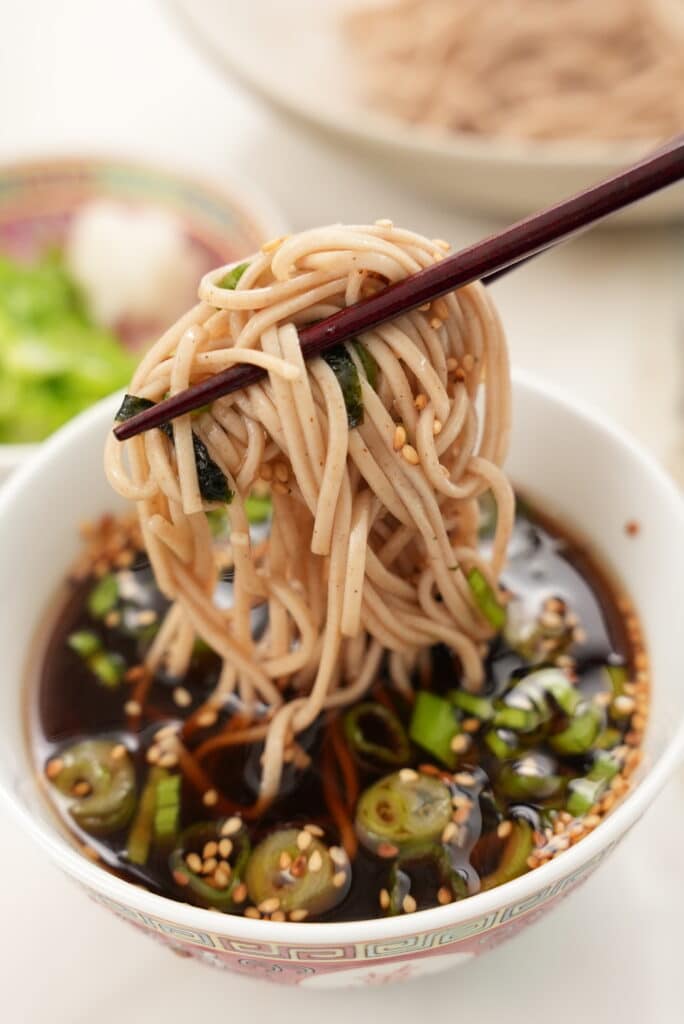
Watch the Cold Soba Noodle Recipe Video Below!
Table of Contents
- Watch the Cold Soba Noodle Recipe Video Below!
- Ingredients for Cold Soba Noodles
- What are Soba Noodles?
- What is Dashi Powder?
- Cold Soba Noodles: Recipe Instructions
- Expert Tips for Cold Soba Noodles
- Storage
- What to Serve with Cold Soba Noodles (Zaru Soba)
- I Love Noodles – What Else Can I Make?
- Cold Soba Noodles (Zaru Soba) Recipe
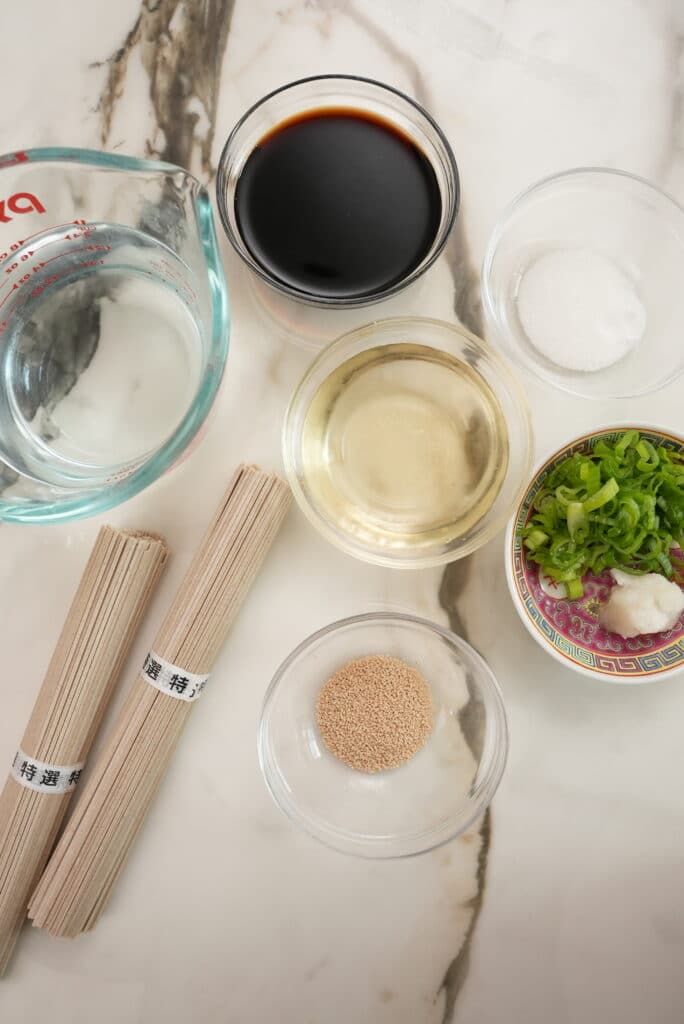
Ingredients for Cold Soba Noodles
Zaru Soba or Cold Soba Noodles with Tsuyu (Dipping Sauce) only needs a few ingredients – which makes it the perfect quick and easy summer meal!
Ingredients
- Water
- Dashi Powder – I used dashi powder, which I buy from my local Japanese market (Mitsuwa) to make dashi stock.
- Light Soy Sauce – This is “light” or “all-purpose” soy sauce – do not use “dark” soy sauce, as it is too thick and sweet for this recipe.
- Mirin – This is a sweet cooking wine that is used frequently in Korean and Japanese cooking. It provides a great balance to the soy sauce in this recipe.
- If you don’t have mirin, you can substitute with rice vinegar but add 1 tsp of sugar, as rice vinegar does not have the sweetness of mirin.
- You can also substitute with 1/4 cup water + 1 tbsp honey mixed in
- Sugar
- Soba (Buckwheat Noodles) – see below
- Sesame seeds – optional garnish
- Chopped scallions – optional garnish
- Grated radish – optional garnish
- Grated fresh wasabi – optional garnish
Key Tip
What are Soba Noodles?
Soba noodles are Japanese noodles made of buckwheat flour. They are full of fiber and are extremely versatile noodles used in a variety of Japanese cooking. They can be served hot during the colder months and served cold during the warmer months like this Cold Soba Noodle (Zaru Soba) recipe! Either way you prepare them, soba noodles are absolutely delicious!
Soba noodles are widely available at most grocery stores. They have a unique nutty flavor due to being made out of buckwheat flour. Because soba is the main component in this dish, I would not recommend substituting with another long noodle.
What is Dashi Powder?
Dashi is Japanese soup stock that is used in many Japanese dishes. It has a unique, rich, umami-packed savory flavor. It is commonly made from dried kelp (kombu) and dried bonito flakes (katsuobushi).
You can make dashi in many different ways:
- from scratch with kombu and katsuobushi
- with a dashi packet
- with dashi powder
You can also purchase liquid dashi (stock)
For this recipe, I used dashi powder. If you do not have dashi powder in your pantry, I would recommend purchasing it. Dashi powder has a long shelf life and is extremely convenient to use because it only needs to be mixed with water. It’s used in a lot of Japanese dishes, so it’s a great item to have in your pantry!
If you use liquid dashi, be sure to use the same measurements as the recipe calls for water and omit the dashi powder.
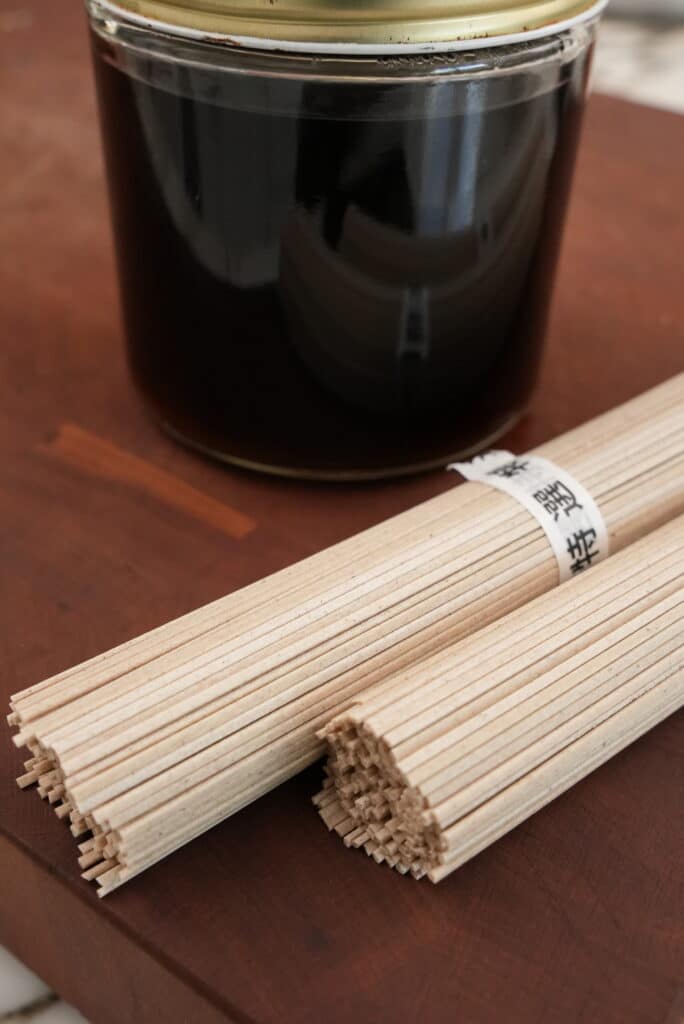
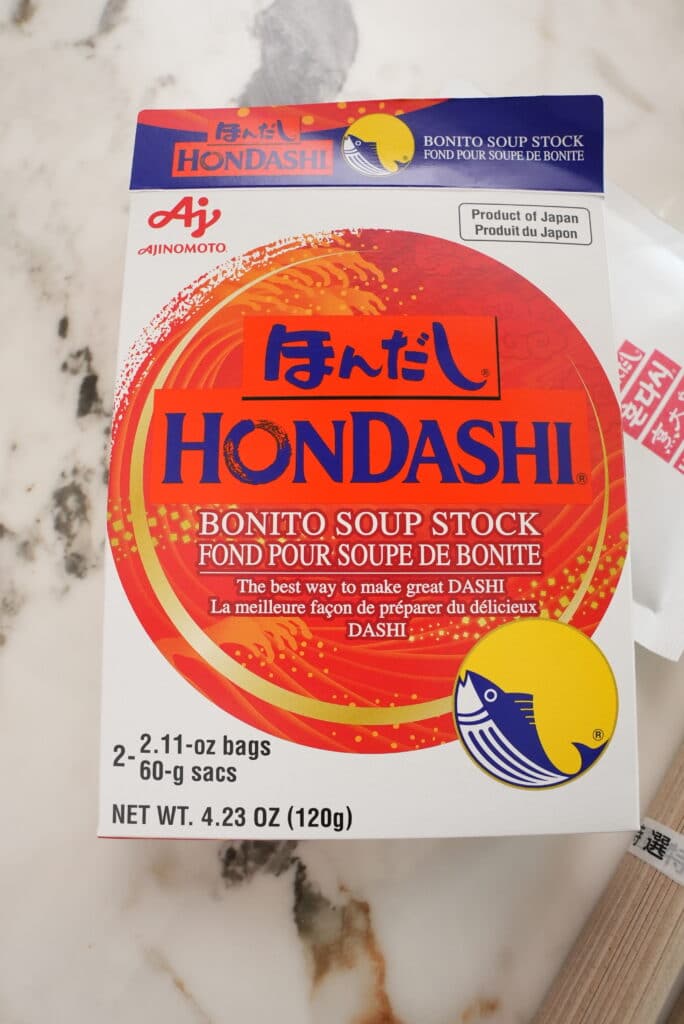
Cold Soba Noodles: Recipe Instructions
1. Make your Tsuyu (Dipping Sauce)
Take a small saucepan and mix together water, dashi powder (or dashi liquid), light soy sauce, mirin, and sugar. Turn the heat to high and mix the ingredients until the sugar is dissolved and the sauce comes to a boil.
Once the sauce is boiling, turn the heat off and let it cool. Tsuyu is meant to be eaten cold, so if you are planning on eating immediately, place the sauce in an airtight container and in an ice bath.
Otherwise, place your tsuyu (dipping sauce) in the refrigerator.
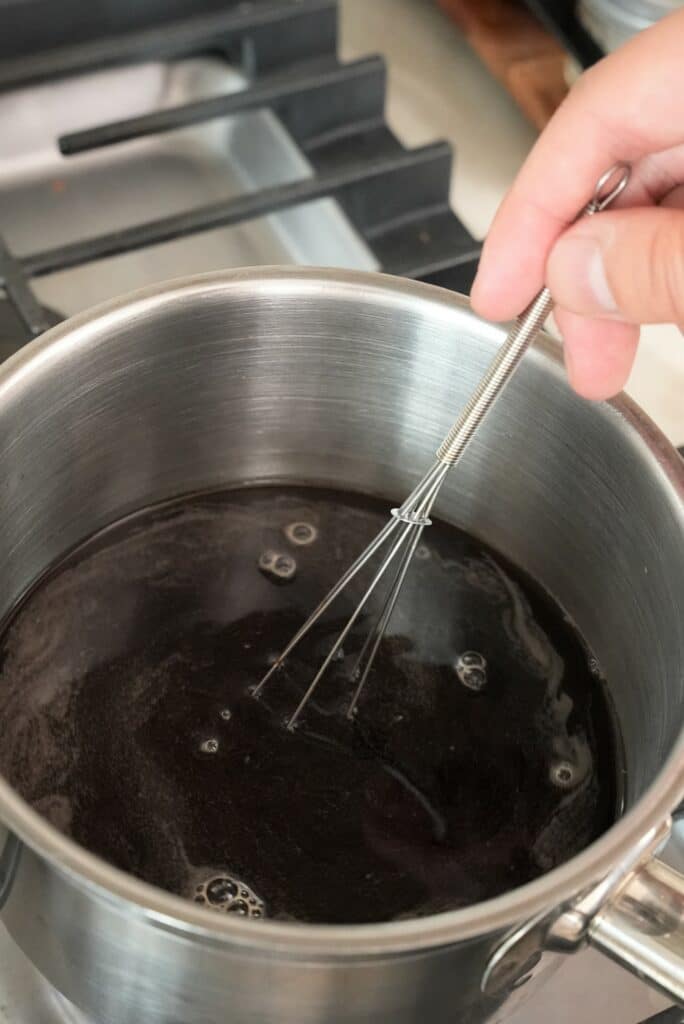
2. Cook your Soba Noodles
In a second pot, cook your soba noodles according to package directions.
Once cooked, drain the noodles and then immediately rinse under cold water to remove any excess starch and stop them from cooking.
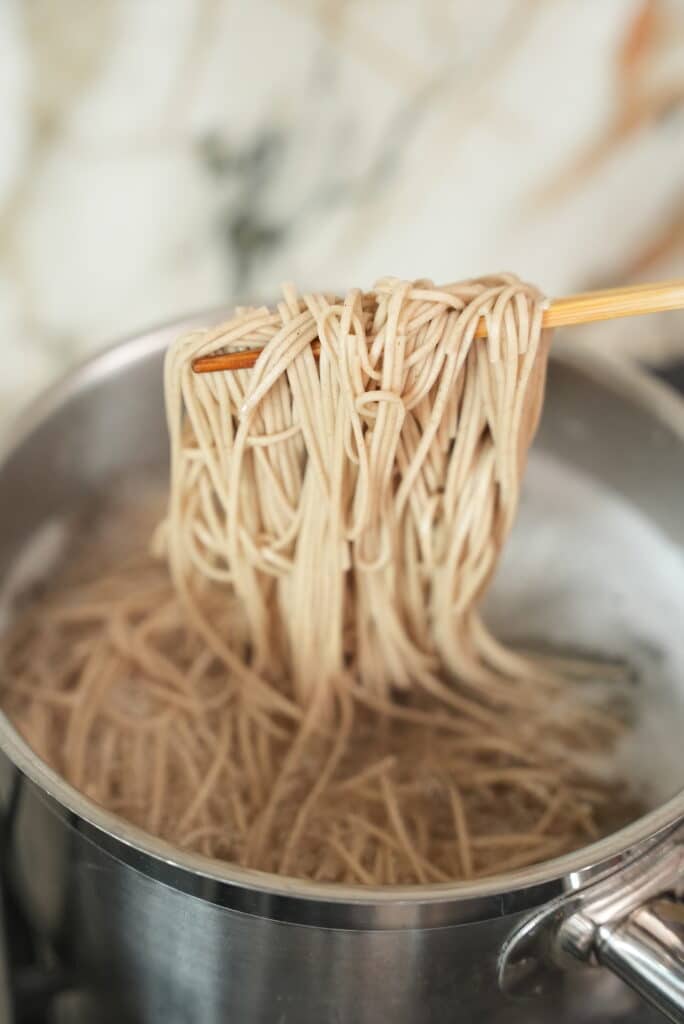
3. Garnish and Serve!
When ready to eat, garnish the sauce with sesame seeds and scallions and dip your noodles. You can also serve with grated radish or wasabi. Enjoy!
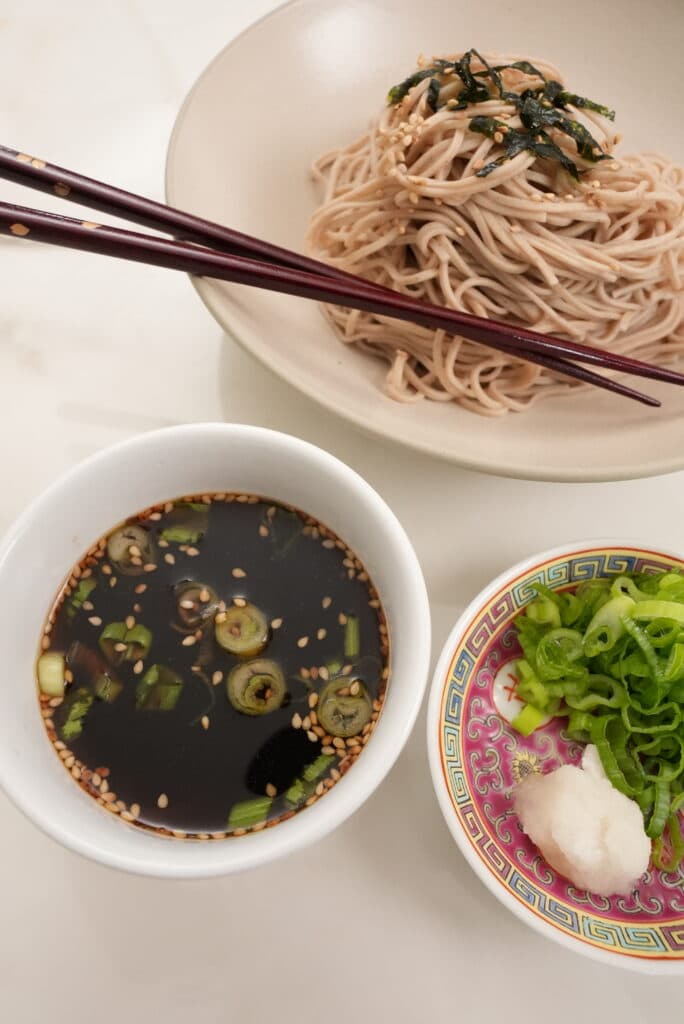
PRO TIPS
Expert Tips for Cold Soba Noodles
Dashi Powder vs. Liquid Dashi
- For this recipe, I used dashi powder and mixed with water. If you use liquid dashi, be sure to use the same measurements as the recipe calls for water and omit the dashi powder.
Rinse Your Cooked Noodles in COLD Water
It’s important to rinse your cooked noodles in cold water immediately, as this will 1. remove any excess starch (which you don’t want in your sauce) and 2. stop any residual heat from cooking the noodles further.
Optional Garnishes
You can garnish your Cold Soba Noodle (Zaru Soba) with some of these optional garnishes –
- Sesame seeds – optional garnish
- Chopped scallions – optional garnish
- Grated radish – optional garnish
- Grated fresh wasabi – optional garnish
Storage
The Tsuyu (dipping sauce) can be stored in an airtight container in the refrigerator for up to one week.
Cooked noodles can need in the refrigerator in an airtight container for 2-3 days but I do not recommend this, as the noodles will stick together.
What to Serve with Cold Soba Noodles (Zaru Soba)
Other Japanese dishes would go well with Cold Soba Noodles – try my Ramen Eggs, for a high protein, easy snack! You can also serve these noodles alongside a heartier main dish, like Chicken Katsu (don’t forget the homemade Tonkatsu Sauce), Chicken Karaage (or lighten things up with Air Fryer Chicken Karaage), or my delicious one-pan Chicken Teriyaki! If you’re feeling like shrimp, there’s nothing better than crispy Panko Shrimp!
I Love Noodles – What Else Can I Make?
If you want a similarly quick and easy dish, make my 10 Minute Sesame Peanut Noodles (or the spicier version Spicy Peanut Noodles) and Spicy Garlic Ramen! Love chili oil? It only takes 15 minutes to make my Chili Oil Noodles! If you’re a fan of gochujang, you’ll love my Spicy Gochujang Noodles! For those that are looking for a heartier dish with mouth-numbing Szechuan flavors, you’ll love my Dan Dan Noodles! One of my personal favorites is Beef Chow Fun!
If you tried this Cold Soba Noodles (Zaru Soba) or any other recipe on my website, please leave a 🌟 star rating and let me know how it went in the 📝 comments below!
Cold Soba Noodles (Zaru Soba)
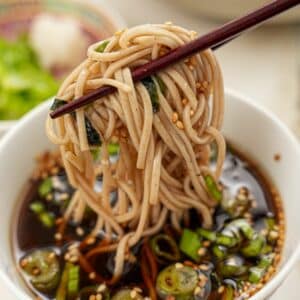
Ingredients
- 1 cup water
- 1 tsp dashi powder, use 1 cup of dashi stock if not using powder
- 1/4 cup light soy sauce
- 1/4 cup mirin
- 1 tbsp sugar
- 8 oz dried soba noodles
- 1 tsp sesame seeds
- 3 scallions, chopped
- 2 tbsp white radish, grated
- 1 tsp wasabi, grated
- 2 sheets nori, cut to thin strips
Instructions
- In a small saucepan, mix together water, dashi powder, light soy sauce, mirin, and sugar over high heat until it comes to a boil. Turn off the heat and transfer to a heat proof dish or glass container. Place in an ice bath until completely cool. If making the sauce ahead of time, place it in the fridge until the sauce is completely cool.
- Heat a pot of boiling water over high heat and cook the soba noodles according to package directions. Immediately drain the soba noodles and rinse with cold water or place in an ice bath to completely stop the cooking process.
- When ready to eat, add the sauce to a small bowl and garnish it with sesame seeds and chopped scallions. Serve the noodles and sauce alongside grated radish, wasabi and nori. Dip your noodles in the sauce and enjoy!
Video
Notes
- dashi powder – Dashi is Japanese soup stock that has a unique, rich, umami-packed savory flavor. I used dashi powder. If you use liquid dashi, be sure to use the same measurements as the recipe calls for water and omit the dashi powder.
- mirin – If you don’t have mirin, you can substitute with rice vinegar + 1 tsp of sugar, or 1/4 cup water + 1 tbsp honey mixed in
- soba (buckwheat noodles) – Soba noodles are Japanese noodles with a unique nutty flavor, made out of buckwheat flour.
Nutrition
Nutrition information is automatically calculated, so should only be used as an approximation.

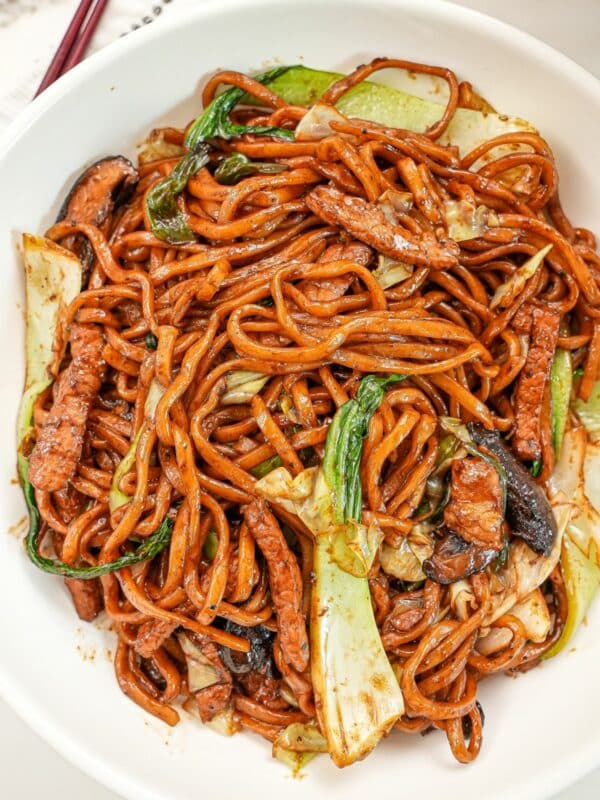
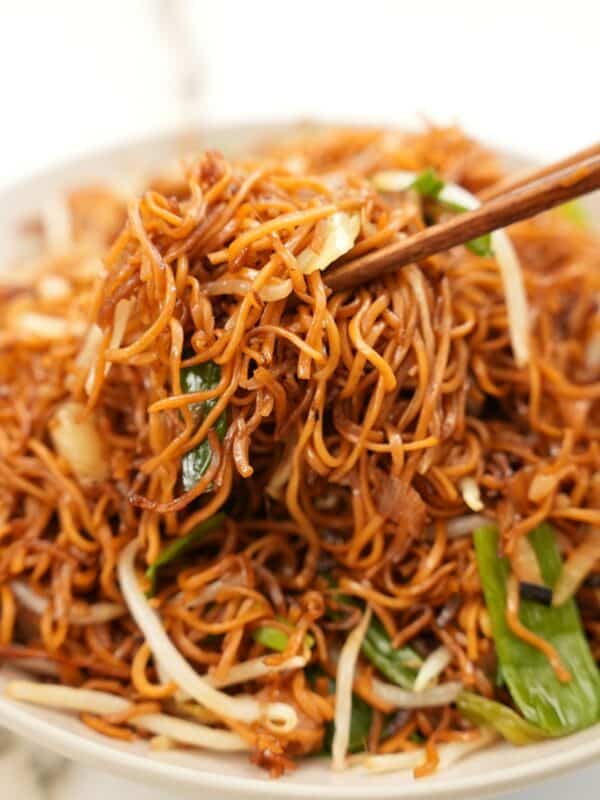
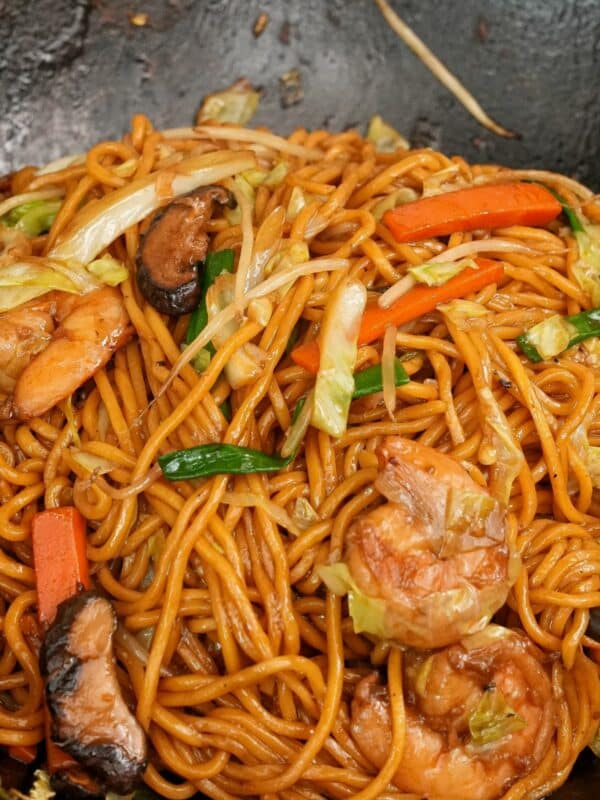
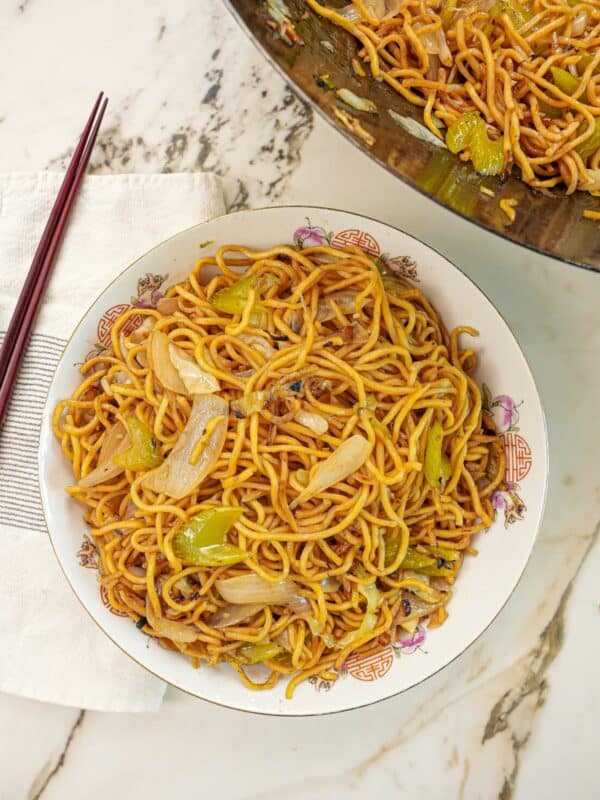







I have made this numerous times and love this recipe. I have used Kiko man light soy sauce unfortunately I have run out. Can I substitute Chinese light soy sauce?
Hi Reiko – thanks so much for your review! The flavor will be slightly different but I wouldn’t say that it’s drastically so. Chinese light soy sauce would be a fine substitute!
Came back from Japan last week and was craving some cold soba noodles. This recipe was easy to make and quick. I added some thin beef slices on the side for additional protein. My husband rated this recipe a 7.5/10! I like that this type of meal is cost-effective and tasty with convenient ingredients in my pantry. Thanks, Chris!
Delicious! Thank you for the great review!
Made this for my mom and she loved it!
My GO-TO cold soba recipe. I’ve made this recipe time and time again. So simple yet so delicious. Thanks CJ!
IG Handle: HAHAJasmin
Amazing dish. My kids request it all the time now.
So delicious and simple, absolutely perfect on a hot summer day
@chunglannie
Tastes like a restaurant-quality meal.
This recipe taste exactly like the restaurants, so good and flavorful!